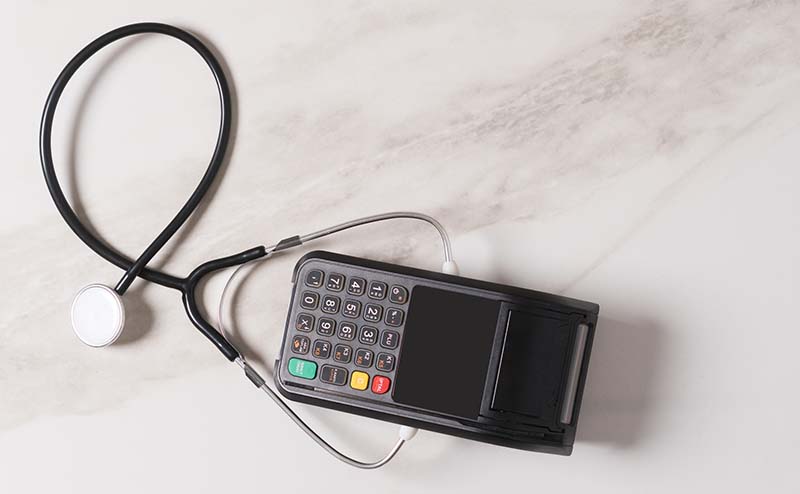As I discussed in a recent Regs & Eggs blog post, the first, and only, emergency medicine cost measure is in the process of being developed by the Centers for Medicare & Medicaid Services (CMS) and its contractor, Acumen. A key step in the development process is the “Field Testing” period, where emergency physicians like you can download feedback reports that tell you how you and your groups would have performed on the cost measure relative to the national average based on Medicare spending data from 2019.
I spent the last blog post highlighting the role ACEP has played thus far in the development of the measure (including having members serve on an expert panel providing direct input to Acumen) as well as the importance of having a reliable cost measure for emergency medicine. However, I want to reiterate again that you should try to download your feedback report and provide input to Acumen and CMS through an online survey. Acumen and CMS are looking for feedback on two topics: the measure itself (how it’s structured and what services are included or excluded) and the format of the feedback report and the experience you had accessing and reviewing it. The deadline for providing feedback is Friday (February 25), but the American Medical Association (AMA) along with ACEP and a few other specialty societies have formally asked for an extension due to the recent COVID-19 surge.
Here are some of the important links to help you with Field Testing Process:
- Background Information on Field Testing Process from CMS
- Instructions on How to Access your Field Testing Report
- A Mock Field Testing Report (to give you an idea of what a report looks like)
- The online survey that Acumen and CMS are requesting that you fill out to provide your input on the measure and the feedback report
While we are trying to get Acumen and CMS to provide you additional time to download and review your feedback reports and provide input via the survey, the deadline at this point is still Friday, February 25. Therefore, on behalf of our emergency physician members, ACEP did submit overarching comments on the emergency medicine cost measure through the survey earlier this week. Highlights of our comments are found below, but please feel free to reach out to us if you would like additional information to help inform your individual comments.
As a reminder, the draft emergency medicine cost measure represents the costs of an episode of care that is initially triggered by a visit to the emergency department (ED). The measure first identifies the emergency physician or group who initially treated the patient and billed an ED evaluation and management (E/M) service. Once the episode is triggered, the measure covers the total cost of certain services for a 30-day period. The measure is stratified into 28 different high-volume ED conditions.
It is important to note that the measure covers both services delivered in and out of the ED during the 30-day period. Acumen and CMS have tried to already exclude some services that are not clinically related to initial ED visit or that cannot be influenced or impacted by the emergency clinician who triggered the episode. Finally, the cost measure is risk adjusted to take different factors outside the control of the emergency physician into account, including patients’ pre-existing conditions, age, and clinical severity.
ACEP provided comments both on the measure itself and on the layout of the Field Testing report and the ability to access and review it. With respect to the construct of the measure, ACEP had the following four overarching comments:
- “Table 2” of the Field Testing report lists out all the types of services that could be included in the episode. As stated earlier, Acumen and CMS already removed some services that could not influenced by the emergency physician. However, ACEP still feels that there are some services included in the measure that emergency physicians cannot control. These include certain imaging services (such as radiation oncology services), inpatient rehabilitation or Long-Term Care Hospital services, dialysis services, ambulance services, and chemotherapy and other Medicare Part B covered drugs. Including the costs of these services in the measure would cause the measure to be an inaccurate reflection of the cost of emergency care. We therefore ask Acumen and CMS to exclude these services from the measure.
- ACEP strongly believes that the length of the episode, 30 days, is too long. Such a long period results in the measure including services and costs that are beyond the scope of the initial emergency visit. For example, we do not believe that the cost for procedures (outpatient surgery) should be attributed to the emergency physician who bills the initial emergency department (ED) evaluation and management (E/M) service. We therefore strongly recommend that that this period be cut back to SEVEN DAYS. This cutoff is consistent with published work which demonstrates that only 1 in 5 ED revisits within 30 days are related to the initial ED visit (specifically, that 77 percent should be classified as new index episodes), and a majority of related ED revisits occur within seven days.
Decreasing the length of the episode to seven days would also negate the need for so many exclusions in the measure. ACEP found that a large component of the variation in the cost of episodes is driven by spending for post-acute care services among patients who are admitted, which, again, are not controlled by emergency physicians. If Acumen and CMS shortened the period to seven days, these services would probably not be included to begin with and therefore would not need to be excluded. Overall, shortening the time period would increase the likelihood that the cost measure is truly attributable to emergency physicians, which increases accountability and the potential for emergency physicians to reduce avoidable costs in each episode.
- ACEP strongly recommends that Acumen and CMS bifurcate costs associated with patients who are admitted with costs for those who are discharged. Although Acumen and CMS have made it clear in the development process that they want to include costs from both admitted and discharged patients in the measure, they must recognize the significant clinical differences and cost variation between patients who are admitted versus those who are discharged and build that into their methodology. Furthermore, the costs associated with post-acute care (care received in a skilled nursing facility or home health care) after an inpatient stay are significant—but should not be attributed to emergency physicians. With respect to skilled nursing facility stays specifically, emergency physicians can never directly admit Medicare beneficiaries to skilled nursing facilities due to the “Three-day Rule” (this Medicare rule requires Medicare beneficiaries to have a three-day inpatient stay in order to receive services from a skilled nursing facility).
The largest cost-affecting decision made by an emergency physician is the admission decision. In other words, the most potential for cost savings and therefore the largest opportunity to change an emergency physicians’ cost profile is at the point when he or she decides to admit or not admit a patient.
The majority of the costs for admitted patients are from hospital inpatient and post-acute services. According to Table 2 of the Field Testing Report, average costs for inpatient services are around $10,000 per episode and post-acute services around $5,000. Conversely, if patients are discharged and only receive ED services and other outpatient services, the total costs are just over $1,000—a fraction of the cost of admitted patients. Thus, if admitted patients are lumped in with discharged patients, there would be a significant disincentive to admit too many acutely ill patients. While Acumen and CMS’ risk adjustment methodology can account for some of this variation, we do not believe that any level of risk adjustment can fully reflect the patient acuity differences between admitted and discharged patients. In all, ACEP again strongly recommends that Acumen and CMS find some approach to stratify these two populations.
- Finally, ACEP recommends that Acumen and CMS also stratify the measure based on the size of the hospital, hospital type (critical access hospital or traditional hospital), and ED volume. These factors can significantly impact the total cost of care. For example, some smaller, rural hospitals cannot handle all inpatient cases and may transfer admitted patients in need of inpatient services to other facilities on a routine basis. Therefore, these hospitals’ cost profiles would be biased and vary significantly from other hospitals, and the measure must take that into account.
On the issue of accessing and reviewing the Field Testing reports, ACEP did note in our survey response that we have heard from some of our members that they had difficulty accessing their group’s field test report. It was also difficult to figure out the appropriate person responsible for pulling the reports and whether they should use the group or individual report for feedback.
Now, what happens once the Field Testing process ends? Remember, the ultimate goal is for the measure to be incorporated into the Merit-based Incentive Payment System (MIPS) and the emergency medicine MIPS Value Pathway (MVP) that CMS approved for MIPS reporting. If Acumen and CMS keep the deadline at Friday (February 25), the next step is for Acumen and the expert panel to reconvene in March to review the input received during the Field Testing period and consider whether or not they need to make any changes to the emergency medicine cost measure and/or the cost measure feedback report. Obviously, based on our major comments stated above, we do hope that Acumen and CMS make some changes to the measure. Once the measure has been finalized by Acumen and CMS, it will go through an extensive endorsement and approval process, most likely starting with the Measure Applications Partnership (MAP) review process. The MAP is a public-private partnership convened by The National Quality Forum (NQF) that provides multi-stakeholder input to CMS on performance measures (including cost measures). CMS also must officially propose the measure in the annual Physician Fee Schedule (PFS) and Quality Payment Program (QPP) proposed regulation, receive and incorporate any public comments from the reg’s 60-day public comment period, and then finalize the measure in the PFS and QPP final reg.
That is indeed many steps! Given the extensive process the cost measure goes through before it is finalized, it may not be incorporated into the MIPS program or the emergency medicine MVP until 2024—although the exact timeline is a bit unclear at this point. I will definitely keep you updated as the cost measure is further refined and goes through the various steps of the approval process.
Until next week, this is Jeffrey saying, enjoy reading regs with your eggs!






